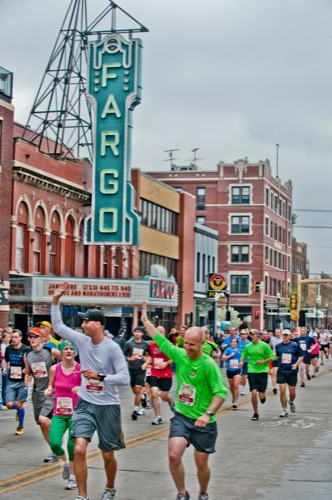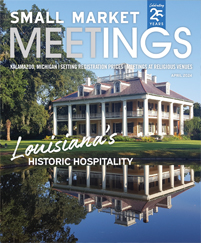
Courtesy Fargo-Moorhead CVB
Say “Fargo” and the mind sees earflaps, endless snow and a wood chipper. Without doubt, the 1996 movie gave North Dakota’s largest city an indelible image.
“Even to this day, when I tell someone I’m from Fargo, they say, ‘Oh, I love that movie!’” said Charley Johnson, president and CEO of the Fargo-Moorhead Convention and Visitors Bureau.
In jest, Johnson typically replies, “Oh, I live that movie every day.” But he doesn’t really mean it. “Obviously,” he said, “we are not the movie.”
In Fargo, you might talk to some citizens who share Marge Gunderson’s accent and catchphrases, but you won’t find much murder and mayhem. A town of 105,000, Fargo averaged about one murder a year from 2001 to 2011. It’s a place where wood chippers chop up trees, not people.
Warm hearts, cold winters
Fargo’s other claim to fame would have to be its winters. Mike Hahn, president and CEO of Downtown Fargo, came to the city from Waterloo, Iowa, a few years ago. “It is cold, and it does get snowy. We live with it.”
The warm hearts outweigh the cold temperatures, Hahn has found. “It is hard to beat the people in Fargo,” he said.
Hotelier Karen Stoker attributes the warmth to North Dakota’s early days. “We’re not many generations away from the people who settled here. North Dakota’s a baby state. People did help each other; they had to. We come by all of that naturally.”
Ruled by the Red River
The region is, in many ways, ruled by the Red River, which flows north into a Canadian lake and divides North Dakota from Minnesota. The river is also the boundary between Fargo and its twin city, Moorhead, Minn. Combined, the two metro areas have a population of about 200,000.
With its frequent floods, the Red River replenishes the soil of the Red River Valley, one of the nation’s prime agricultural regions.
“You can grow just about anything here,” said Johnson.
The resulting, hardy agriculture industry accounts for 40 percent of meeting business at the Holiday Inn Fargo, the area’s largest conference hotel with 310 guest rooms and 25,000 square feet of meeting space.
The river’s almost annual spring floods make April a bit dicey, especially for places on its banks, such as Rustic Oaks, a retreat center that closes only in April, when flooding generally occurs.
But floods never dampen Fargo’s spirits for long, and preventive measures have worked. More than a million sandbags made, delivered and stacked in strategic spots by citizen volunteers have saved the city from serious damage in most cases.
“Everybody pitches in when the flood hits the fan,” Johnson said. “We never have a problem finding volunteers.”
When summer finally comes, Fargo residents dash off to nearby lakes for long weekends. There’s no waiting at restaurants; streets are quiet.
“It is a ghost town,” said Mike Prekel, general manager at the Holiday Inn. “Fridays you can go anywhere and do anything in town. By 3 o’clock on Friday, you are not going to find anyone in their office.”











